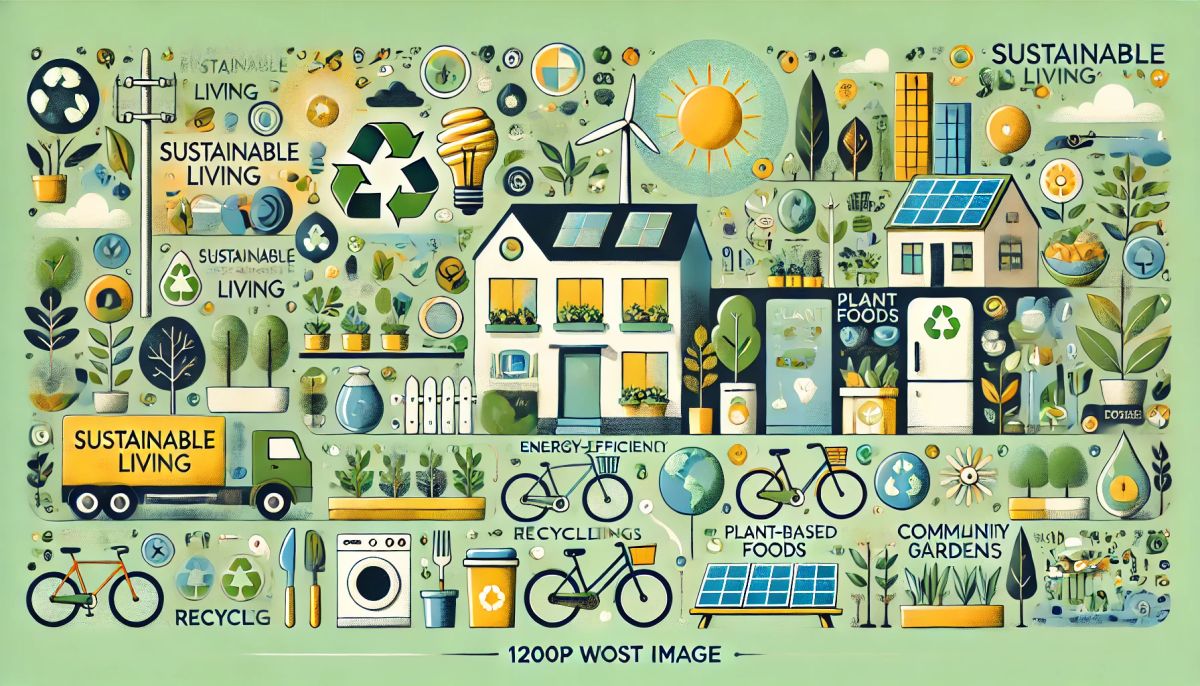In recent years, the concept of sustainable living has gained significant traction as more people become aware of the environmental challenges our planet faces. From climate change to resource depletion, the need for a more sustainable lifestyle is more pressing than ever. In this blog post, we will explore practical steps you can take to live sustainably, reduce your carbon footprint, and contribute to a healthier planet.
What is Sustainable Living?
Sustainable living refers to a lifestyle that aims to reduce an individual's or society's use of the Earth's natural resources. It encompasses various practices that promote environmental health, social equity, and economic viability. By making conscious choices in our daily lives, we can minimize our impact on the environment and foster a more sustainable future.
Why is Sustainable Living Important?
- Environmental Protection: Sustainable living helps protect ecosystems and biodiversity by reducing pollution and conserving natural resources.
- Resource Conservation: It promotes the efficient use of resources, ensuring that future generations have access to clean air, water, and food.
- Economic Benefits: Sustainable practices often lead to cost savings, such as reduced energy bills and less waste.
- Healthier Communities: A focus on sustainability can lead to cleaner air and water, promoting better health for individuals and communities.
Simple Steps to Start Living Sustainably
Transitioning to a sustainable lifestyle doesn't have to be overwhelming. Here are some actionable steps you can take today:
1. Reduce, Reuse, Recycle
The three R's are fundamental principles of sustainable living:
- Reduce: Cut down on what you consume. Assess your needs and avoid unnecessary purchases.
- Reuse: Find new uses for items instead of throwing them away. For example, glass jars can be repurposed for storage or as planters.
- Recycle: Familiarize yourself with your local recycling program and ensure you're recycling materials like paper, plastic, and metal correctly.
2. Conserve Energy
Energy conservation is crucial for reducing your carbon footprint:
- Switch to LED Bulbs: They use up to 80% less energy than traditional incandescent bulbs.
- Unplug Devices: Many electronics consume energy even when turned off. Unplug chargers and devices when not in use.
- Use Smart Thermostats: These devices optimize heating and cooling in your home, saving energy and money.
3. Choose Sustainable Transportation
Transportation is a significant contributor to greenhouse gas emissions:
- Walk or Bike: For short distances, consider walking or biking instead of driving.
- Public Transport: Use buses or trains whenever possible to reduce your carbon footprint.
- Carpool: Share rides with friends or colleagues to cut down on the number of vehicles on the road.
4. Support Local and Sustainable Products
Choosing local products supports your community and reduces transportation emissions:
- Farmers' Markets: Buy fresh produce from local farmers' markets to support sustainable agriculture.
- Eco-Friendly Brands: Research brands that prioritize sustainability in their production processes.
5. Practice Water Conservation
Water is a precious resource that should be used wisely:
- Fix Leaks: Repair dripping faucets and running toilets to prevent water waste.
- Shorten Showers: Aim for showers that last no longer than five minutes.
- Collect Rainwater: Use rain barrels to collect water for gardening.
6. Adopt a Plant-Based Diet
Food production has a significant environmental impact:
- Eat More Plants: Incorporate more fruits, vegetables, grains, and legumes into your diet while reducing meat consumption.
- Grow Your Own Food: Start a small garden or even a few pots of herbs on your balcony.
The Role of Community in Sustainable Living
Living sustainably is often easier when done collectively. Engage with your community by:
- Joining Local Initiatives: Participate in community clean-up days or tree planting events.
- Educating Others: Share your knowledge about sustainability with friends and family.
- Advocating for Change: Support policies that promote sustainability at local, national, and global levels.
Conclusion
Embracing sustainable living is not just an individual effort; it’s a collective movement toward a healthier planet. By making small changes in our daily lives—like reducing waste, conserving energy, supporting local businesses, and advocating for sustainable practices—we can create a significant impact over time. Remember that every little bit counts! Start with one or two changes today and gradually incorporate more sustainable practices into your life. Together, we can make a difference for ourselves and future generations.
Call to Action
If you found this guide helpful, consider sharing it with friends or family who might be interested in living more sustainably. Let's inspire each other towards greener choices! This blog post is designed not only to inform but also to engage readers on their journey toward sustainable living while being optimized for SEO through relevant keywords such as "sustainable living," "reduce reuse recycle," "conserve energy," "plant-based diet," and "community initiatives."
